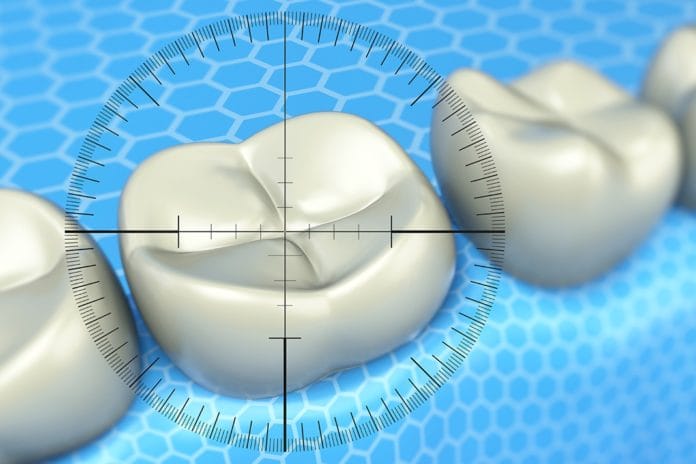A study published online in Environmental Health Perspective on July 20, 2012, written by Anna Choi, a research scientist in the Department of Environmental Health at Harvard, claimed, “Children in high-fluoride areas had significantly lower IQ scores than those who lived in low fluoride areas.”1 This publication fueled the fire for the anti-fluoride movement.
In March of 2013, another article was published in Environmental Health Perspective questioning the validity of the previously published article. This article stated, “As Choi et al. (2012) pointed out in their conclusion, there is a “possibility of an adverse effect of high fluoride exposure on children’s neurodevelopment.” Such a conclusion can be considered an ecological fallacy, which can easily lead to misinterpretation of the results.”2 Naturally, this article did not go viral on social media, in the same manner as the first article.
I believe patients have a right to refuse treatment, such as fluoride. However, I also believe it is important they make an informed decision. The following are the primary things I like to share with patients in regards to fluoride use and in-office fluoride treatments.
Systemic Fluoride
I encourage patients to research the difference between systemic fluoride and topically applied fluoride. Many patients do not realize there is a difference. The mode of action, as well as the delivery of systemic and topical fluoride, are quite different.
Systemic fluoride’s cariostatic effect is attributed to the reduced solubility of the enamel due to the incorporation of fluoride into the enamel minerals during tooth formation.3 Systemic fluoride, also referred to as water fluoridation in the U.S. (other countries use fluoridated salt and milk to help reduce caries risk), is often what patients are thinking of when they are concerned about poisoning and neurotoxicity. What patients fail to realize is fluoride occurs naturally in our environment; exposure can occur through dietary intake and respiration.
Just like any other substance, we are exposed to (oxygen, water, table salt), fluoride can be toxic in certain quantities.5 For comparison’s sake, let’s look at fluoride levels in some everyday foods and drinks:
- Black tea: 3-5mg/L = 3-5 ppm of fluoride
- Shellfish: 2-3 mg/L = 2-3 ppm of fluoride
- Wine: 1-2mg/L = 1-2 ppm of fluoride
- Beer: 0.5mg/L = 0.5 ppm of fluoride
- Tap water: 0.25-1mg/L = 0.25-1 ppm of fluoride
These are just a few examples; the USDA has a very comprehensive spreadsheet on their website with more information.5,6
Any substance can be lethal at a certain dose, even water. A lethal dose of fluoride for a child is 16 mg per 2.2 lbs of body weight and a lethal dose for an adult is 32 mg per 2.2 lbs of body weight. A toxic dose for children and adults is 5 mg per 2.2 lbs of body weight; with a little math, you can see reaching a toxic or lethal dose would be very difficult.7 For instance, a child weighing 45 pounds would need to ingest 4 tubes of toothpaste to reach a lethal dose. An adult weighing 150 pounds would need to consume 13 tubes of toothpaste to reach a lethal dose. I would like to add, for acute toxicity, or a lethal dose, the fluoride must be consumed in a relatively short period of time. Most cases of toxic or lethal doses of fluoride occur when a child ingests a large quantity of toothpaste or other over the counter dental products.
Another common concern I hear from patients is the fear of fluorosis. Dental fluorosis is generally associated with chronic fluoride toxicity. Enamel fluorosis and primary dentin fluorosis can only occur when teeth are forming. Therefore, fluoride exposure that contributes to fluorosis occurs during childhood. The severity of fluorosis is directly related to the dose, time, and duration of exposure.8,9
It is important to understand fluoride metabolism. Fluoride metabolism includes absorption, distribution, and excretion, where each step depends on the pH. After ingestion, plasma fluoride reaches a peak within 20–60 minutes, followed by a rapid decline as a result of both uptake in calcified tissues and urine excretion. The small intestine also contributes to fluoride absorption in a pH-independent mechanism. Non-absorbed fluoride is excreted in feces.
From plasma, fluoride is distributed to both hard and soft tissues followed by its renal excretion. A minor portion of absorbed fluoride is found in soft tissues through a steady-state distribution between extracellular and intracellular fluids. However, about 50% of the absorbed fluoride is incorporated in calcified tissues, mainly in bone, where 99% of the fluoride content in the body is found.
Fluoride renal excretion is one of the most important mechanisms for the regulation of fluoride levels in the body. About 60% of the daily ingested fluoride is excreted in urine of healthy adults and children. Many factors can modify fluoride metabolism such as chronic or acute acid-base disturbances, hematocrit, altitude, physical activity, circadian rhythm, hormones, nutritional status, diet, and genetic predisposition.10
Although dental professionals have no control over the amount of systemic fluoride a patient ingests, it is important to understand the mechanism to educate patients better.
Topical Fluoride
The CDC named community water fluoridation one of 10 great public health achievements of the 20th century.11 However, recent studies have determined that fluoride primarily works after teeth have erupted, which indicate adults also benefit from topical fluoride, rather than only children, as previously assumed.4
Applying fluoride gel or varnish containing a high concentration of fluoride to the teeth leaves a temporary layer of calcium-fluoride-like material on the enamel surface. The fluoride in this material is released when the pH drops in the mouth in response to acid production and is then available to remineralize enamel.12
A typical application of fluoride varnish requires 0.2-0.5 mL, resulting in total fluoride ion application of approximately 5-11 mg. Proper application technique reduces the possibility a patient will swallow the varnish during its application, and limits the total amount of fluoride swallowed as the varnish wears off the teeth over a period of hours.13 To reach a toxic dose of fluoride via topical fluoride varnish, a patient weighing 22 lbs (age 1-2 yrs) would have to ingest the entire dose from 5 varnish applications; the amount needed to cause a toxic dose increases as the weight of the patient increases.
A recent study to assess urinary fluoride excretion after topical application of fluoride varnish in preschool children concluded a single topical fluoride varnish treatment did not significantly increase the urinary fluoride excretion compared with placebo.14 As mentioned previously, fluoride is metabolized in the kidneys, making urinalysis a highly reliable test for increased fluoride exposure. This study further supports that minimal fluoride is swallowed, during and after, fluoride varnish application.
A survey was conducted to asses caregivers understanding of fluoride varnish. Of the 140 responses, 22.1 percent of the responses indicated lack of knowledge about fluoride varnish, 23.6 percent stated that it was for teeth, 8.6 percent stated it was something in toothpaste or water, and 45.7 percent stated it is something that helps teeth. About 52.7 percent of responses indicated lack of knowledge, incomplete, or incorrect understanding. At the caregiver-level, 50.4 percent did not know what fluoride varnish was or provided an incorrect or incomplete response. This indicates many caregivers have an incomplete or inaccurate understanding of fluoride varnish.15
Although a lot of attention has been focused on caregiver refusal of vaccines, little attention has highlighted topical fluoride refusal. In the past, it has been reported topical fluoride and vaccine refusal are correlated.16 Findings indicate that correlations between topical fluoride and vaccine-specific concerns are related to disease severity and internet-based, information-seeking behaviors. The clinical relevance of caregivers’ refusal of preventative care has become a problem which leads to greater disease burden for children and peers, potentially higher cost to the health care system, and preventable suffering.17 This, clearly, indicates healthcare providers need to educate patients on the benefits of preventive care.
Preventive care has changed medicine and dentistry over the years. We live in a time that many diseases have been eradicated due to preventive care. Though I believe patients and caregivers have the right to refuse preventive treatment, with the proper education and science-based evidence, I can’t imagine why they would. The amount of misinformation available on the internet will always be an obstacle, but preventive care professionals should not let that discourage them from spreading the facts. Not everyone will believe you or trust the science; however, you can rest easy at night knowing you did your part to help patients make informed decisions about their health and the health of their children.
SEE ALSO: Fluoride Varnish Shown to Prevent Dental Caries in Young Children
DON’T MISS: The History of Fluoride and Why It’s So Important
References
- Anna L Choi, Guifan Sun, Ying Zhang, and Phillippe Grandjean. Develeopmental Fluoride Neurotoxicity: A Systemic Review and Meta-Analysis. Environ Health Perspect. 2012 Oct;120(10):1362-8. Retrieved from https://www.ncbi.nlm.nih.gov/pubmed/22820538
- Siamak Sabour and Zahra Ghorbani. Development Fluoride Neurotoxocity: Clinical Importance versus Statistical Significance. Environ Health Perspect. 2013 Mar; 121(3): a70. Retrieved from https://www.ncbi.nlm.nih.gov/pmc/articles/PMC3621182/
- K. Rosin-Grget and I. Lincir Current Concept on the Anticaries Fluoride Mechanism of Action. Coll. Antropol. 25 (2001) 2: 703-712. Retrieved from https://www.ncbi.nlm.nih.gov/pubmed/11811302
- Centers for Disease Control and Prevention. Retrieved from https://www.cdc.gov/mmwr/preview/mmwrhtml/rr5014a1.htm
- Domen Kanduti, Petra Sterbenk, and Barbara Artnik. Fluoride: A Review on Use and Effects on Health. Mater Sociomed 2016 Apr; 28(2). Retrieved from https://www.ncbi.nlm.nih.gov/pmc/articles/PMC4851520/
- United States Department of Agriculture. Retrieved from https://www.ars.usda.gov/northeast-area/beltsville-md-bhnrc/beltsville-human-nutrition-research-center/nutrient-data-laboratory/docs/usda-national-fluoride-database-of-selected-beverages-and-foods-release-2-2005/
- Rizwan Ullah, Muhammad Sohail Zafar, and Nazish Shahani. Potential fluoride toxicity from oral medicaments: A review. Iran J Basic Med Sci. 2017 Aug; 20(8): 841-848. Retrieved from https://www.ncbi.nlm.nih.gov/pmc/articles/PMC5651468/
- Pamela DenBesten and Wu Li. Chronic Fluoride Toxicity: Dental Fluorosis. Monogr Oral Sci. 2011; 22: 81-96. Retrived from https://www.ncbi.nlm.nih.gov/pmc/articles/PMC3433161/
- Peres Buzalaf, Camila & Leite, Aline & Buzalaf, Marília. (2015). Fluoride Metabolism. 54-74. Retrieved from https://www.researchgate.net/publication/283794601_Fluoride_Metabolism
- Buzalaf MA, and Whitford GM. Fluoride Metabolism. Monogr Oral Sci. 2011; 22:20-36. Retrieved from https://www.ncbi.nlm.nih.gov/pubmed/21701189
- Centers for Disease Control and Prevention. Retrieved from https://www.cdc.gov/mmwr/preview/mmwrhtml/mm4850bx.htm
- Centers for Disease Control and Prevention. Retrieved from https://www.cdc.gov/mmwr/preview/mmwrhtml/rr5014a1.htm
- American Dental Association. Retrieved from https://www.ada.org/en/member-center/oral-health-topics/fluoride-topical-and-systemic-supplements
- Twetman S, and Stecksen-Blicks C. Urinary Fluoride Excretion after a Single Application of Fluoride Varnish in Preschool Children. Oral Health Prev Dent. 2018; 16(4):351-354. Retrieved from https://www.ncbi.nlm.nih.gov/pubmed/30175333
- Chi DL, Richman J, Senturia K, Zahlis E. Caregivers’ understanding of fluoride varnis: implications for Future Clinical Strategies and Research on Preventative Care Decision Making. J Public Health Dent. 2018 Aug 28. Retrieved from https://www.ncbi.nlm.nih.gov/pubmed/30152869
- Chi DL. Caregivers who refuse preventive care for their children: the relationship between immunization and topical fluoride refusal. Am J Public Health 2014 Jul; 104(7): 1327-33. Retrieved from https://www.ncbi.nlm.nih.gov/pubmed/24832428
- Richard M. Carpiano and Donald L Chi. Parents’ attitudes towards topical fluoride and vaccines for children: Are these distinct or overlapping phenomena? Prev Med Rep. 2018 Jun; 10: 123-128. Retrieved from https://www.ncbi.nlm.nih.gov/pmc/articles/PMC5945909/











